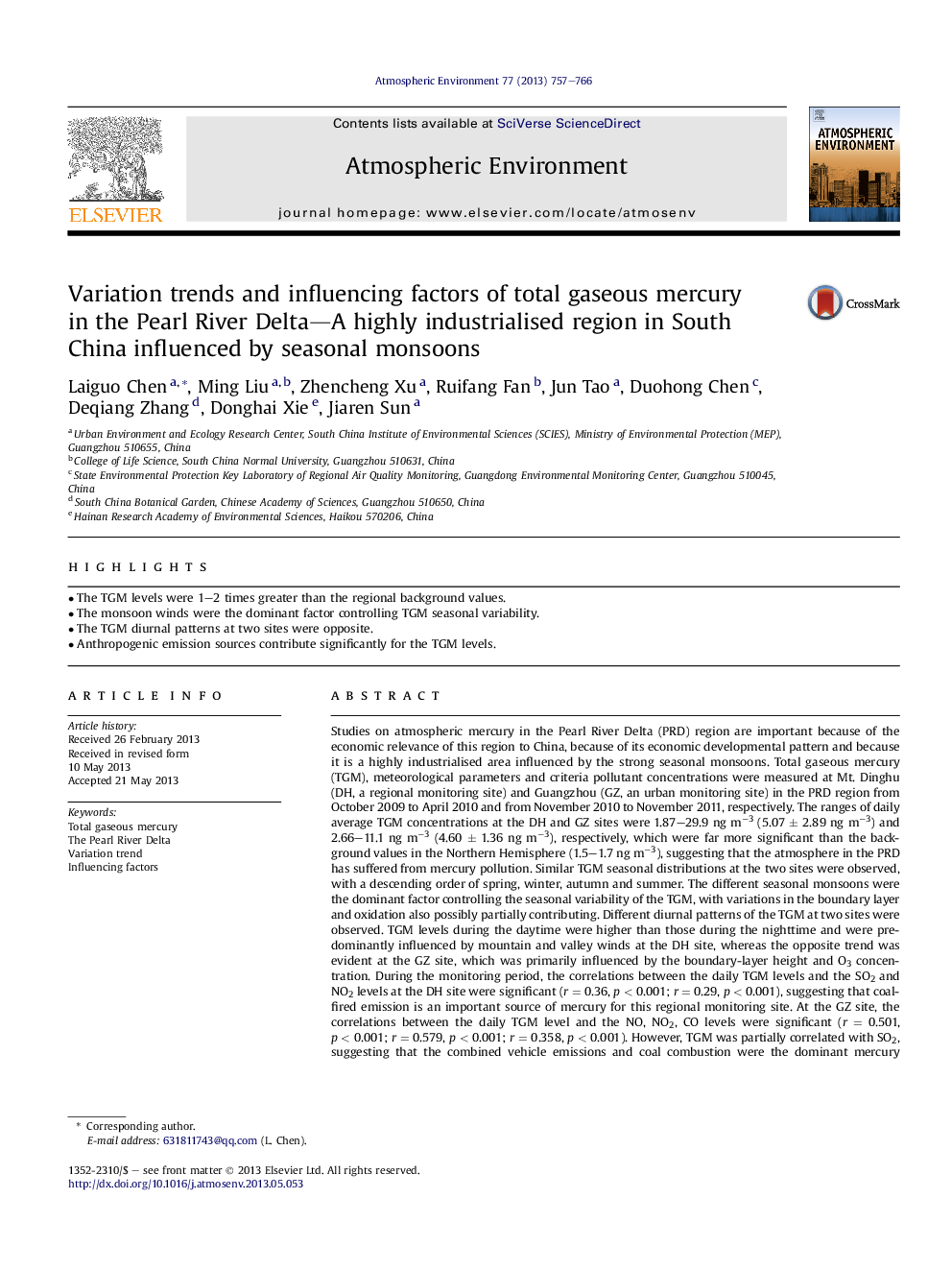| کد مقاله | کد نشریه | سال انتشار | مقاله انگلیسی | نسخه تمام متن |
|---|---|---|---|---|
| 6341352 | 1620394 | 2013 | 10 صفحه PDF | دانلود رایگان |
عنوان انگلیسی مقاله ISI
Variation trends and influencing factors of total gaseous mercury in the Pearl River Delta-A highly industrialised region in South China influenced by seasonal monsoons
دانلود مقاله + سفارش ترجمه
دانلود مقاله ISI انگلیسی
رایگان برای ایرانیان
کلمات کلیدی
موضوعات مرتبط
مهندسی و علوم پایه
علوم زمین و سیارات
علم هواشناسی
پیش نمایش صفحه اول مقاله

چکیده انگلیسی
Studies on atmospheric mercury in the Pearl River Delta (PRD) region are important because of the economic relevance of this region to China, because of its economic developmental pattern and because it is a highly industrialised area influenced by the strong seasonal monsoons. Total gaseous mercury (TGM), meteorological parameters and criteria pollutant concentrations were measured at Mt. Dinghu (DH, a regional monitoring site) and Guangzhou (GZ, an urban monitoring site) in the PRD region from October 2009 to April 2010 and from November 2010 to November 2011, respectively. The ranges of daily average TGM concentrations at the DH and GZ sites were 1.87-29.9 ng mâ3 (5.07 ± 2.89 ng mâ3) and 2.66-11.1 ng mâ3 (4.60 ± 1.36 ng mâ3), respectively, which were far more significant than the background values in the Northern Hemisphere (1.5-1.7 ng mâ3), suggesting that the atmosphere in the PRD has suffered from mercury pollution. Similar TGM seasonal distributions at the two sites were observed, with a descending order of spring, winter, autumn and summer. The different seasonal monsoons were the dominant factor controlling the seasonal variability of the TGM, with variations in the boundary layer and oxidation also possibly partially contributing. Different diurnal patterns of the TGM at two sites were observed. TGM levels during the daytime were higher than those during the nighttime and were predominantly influenced by mountain and valley winds at the DH site, whereas the opposite trend was evident at the GZ site, which was primarily influenced by the boundary-layer height and O3 concentration. During the monitoring period, the correlations between the daily TGM levels and the SO2 and NO2 levels at the DH site were significant (r = 0.36, p < 0.001; r = 0.29, p < 0.001), suggesting that coal-fired emission is an important source of mercury for this regional monitoring site. At the GZ site, the correlations between the daily TGM level and the NO, NO2, CO levels were significant (r = 0.501, p < 0.001; r = 0.579, p < 0.001; r = 0.358, p < 0.001). However, TGM was partially correlated with SO2, suggesting that the combined vehicle emissions and coal combustion were the dominant mercury sources for this urban monitoring site. The TGM distribution figure, which related to the wind-rose pattern and the distribution figure of emission sources, indicated significant contributions from anthropogenic emission sources.
ناشر
Database: Elsevier - ScienceDirect (ساینس دایرکت)
Journal: Atmospheric Environment - Volume 77, October 2013, Pages 757-766
Journal: Atmospheric Environment - Volume 77, October 2013, Pages 757-766
نویسندگان
Laiguo Chen, Ming Liu, Zhencheng Xu, Ruifang Fan, Jun Tao, Duohong Chen, Deqiang Zhang, Donghai Xie, Jiaren Sun,